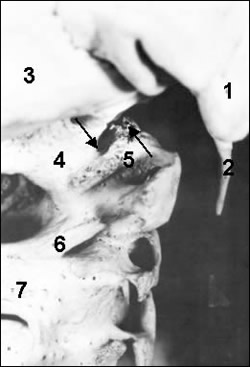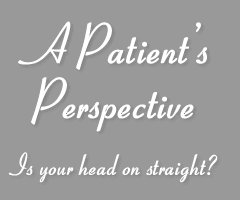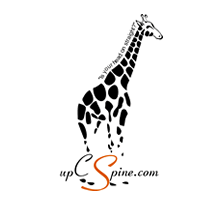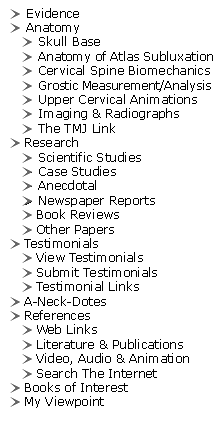Home | Evidence | My Viewpoint
MY VIEWPOINT

Subluxation Not a Viable Option
http://mccoypress.sharepoint.com/Pages/journals.aspx
Dr. Matthew McCoy editor@jvsr.com
Editor - Journal of Vertebral Subluxation Research
Vice President - Research & Clinical Science
Support Chiropractic Research
http://mccoypress.sharepoint.com/Pages/journals.aspx
My response to the above posting by Dr. McCoy.
I agree and disagree with the reference from
Murphy et al. If one looks at the research including case studies
today, the most profound ones are almost all upper cervical based.
Meaning the correction/adjustment was done to the upper cervical
spine. X-rays taken of the upper cervical spine reveal in all its
glory, THE SUBLUXATION. It can be seen before
and after correction. There is firm proof today that this subluxation
discovered by BJ Palmer exists. Chiropractic need not look any
further than this. I agree with BJ Palmer that subluxations below
the level of C2 do not exist. Misalignments however, below C2 are
just that, misalignments (secondary), they not subluxations, unless
these misalignments have progressed to a stage that normal imaging
shows them (degeneration) or the patient has sustained ‘significant’ trauma.
The current chiropractic view that a vertebra moves and presses
on the nerve leaving the spinal canal is not sustainable and not
viewable on X-ray in the majority of patients being treated today.
It is the altered weight bearing throughout the spine generated
by the upper cervical subluxation which produces the misalignments
below C2 which progress over many years into a visible (on X-ray)
degeneration. Scoliosis produces its own nerve compression but
not a ‘bone-on-nerve’ compression. The mechanism is
a muscular compression or traction of nerves leaving the spinal
produced by the muscles trying to hold the spinal column erect.
Nerves still fire but not at optimum levels.
I challenge all of chiropractic to embrace upper cervical
specific work before it is taken from you. For example,
the book edited by Heiner Biedermann, MD ‘Manual Therapy in
Children’, clearly describes/shows chiropractic adjustments
to the upper cervical spine. Further the book edited by Howard Vernon,
DC, which by the way is full of contributions from medical doctors, ‘The
Cranio-cervical syndrome’ again describes the chiropractic
upper cervical subluxation. There is a window of opportunity because
Biedermann’s own peers do not seem to appreciate what has been ‘discovered’ about
manual therapy (chiropractic). At the end of the book, in the 'Epilogue'
(p321), as if out of frustration he says "From
the inside out it (manual therapy) is a wonderfully all-encompassing
variant of the healing professions" and it is "this very
ability which turns manual therapy into an unwelcome guest of one's
own field of work." He cites comments from his peers
like "How dare these people claim
to solve problems which have been hounding us for many years ...
branding those intruders as confidence tricksters." Sound
familiar?
The sooner ALL of chiropractic is practicing a specific upper cervical approach
to adjusting the upper cervical spine the sooner chiropractic will be catapulted
into the mainstream. It will also spawn many more patients like me, Louella
Harris and James Tomasi; patients who are willing to invest their own time,
funds and energies promoting upper cervical chiropractic. I communicate with
people regularly who have had ‘miraculous’ recoveries when their
upper cervical spines are adjusted. Many want to write books, develop websites
and so on to tell their story. We patients have no problem with chiropractic
doctors practicing what they do today as long as they are ALL trained in adjusting
the upper cervical spine specifically, which means taking X-rays as well.
It’s disappointing that chiropractic does not study the upper cervical
approach which includes precision X-rays. X-rays are necessary to calculate
the correct angle and line of drive for the adjustment as well as ‘proving’ existence
and correction of the upper cervical subluxation. Blair photographed the upper
cervical subluxation. I have included it below but more information can be
found on my website at http://www.upcspine.com/anatomy2.htm.
Clearly the occiput has shifted with respect to the atlas.
 Figure
4: A close look at the subluxation! Figure
4: A close look at the subluxation!
Page 9 of Dr. Blair’s document (The Chiropractic
Story silently told in a medical museum – William G. Blair D.C., Ph.
C., F.I.C.A., ©1973) shows the photograph opposite. Let’s have
a closer look at the anatomy of this subluxation. The numbered structures
are:
1. Right mastoid process;
2. Right styloid process;
3. Right side occipital
bone;
4. Right occipital condyle;
5. right lateral mass of the atlas (C1);
6. Right side posterior arch of atlas;
7. Right lamina of axis (C2).
In summary research should be targeted mainly at the upper cervical spine.
Any research funds I raise with some projects I have happening at the moment
will be going towards upper cervical chiropractic research. As this is where
I’m certain chiropractic will be impacted most positively.
I know there will be chiropractors who don’t agree with my comments.
Well and good, I wouldn’t expect anything different. But I think if everyone
goes back and looks again at the work of BJ Palmer they will soon realize how
right he was. Chiropractic patients are discovering it every day, why not chiropractors?
|





